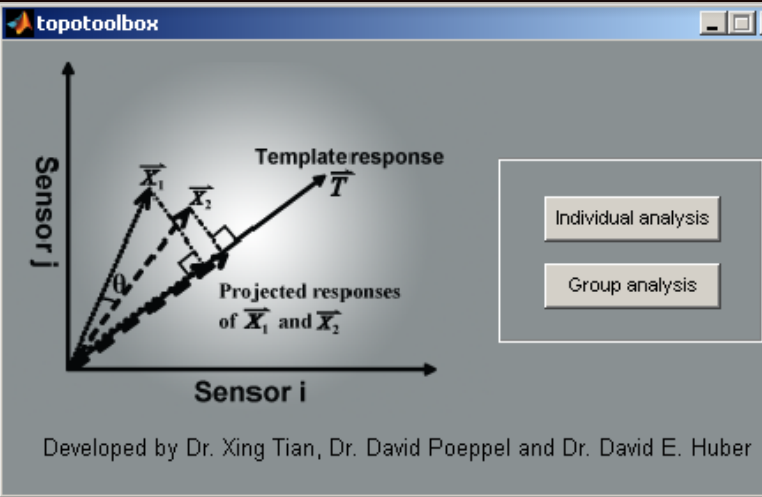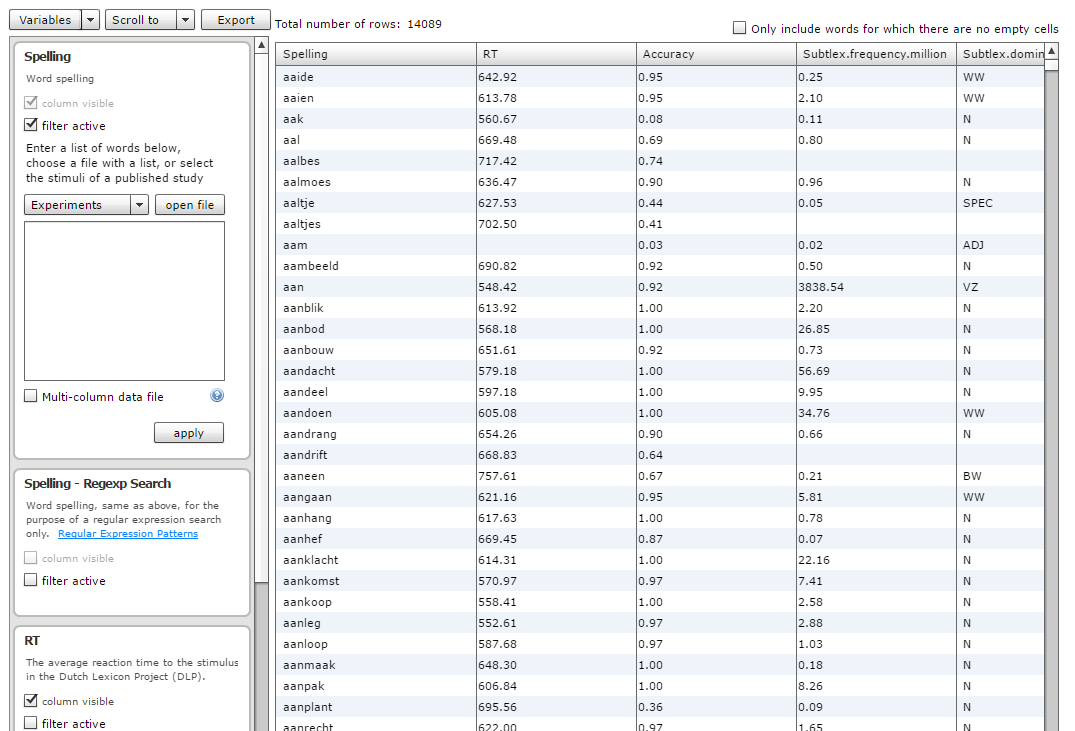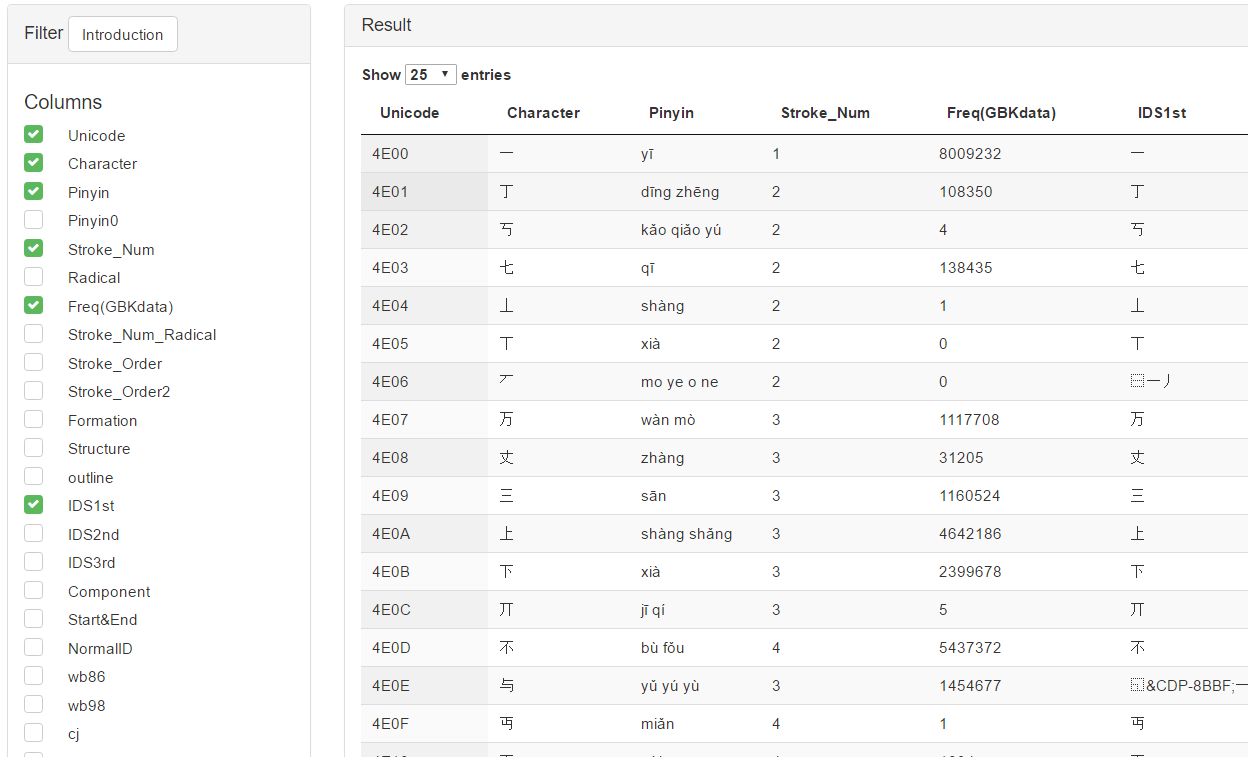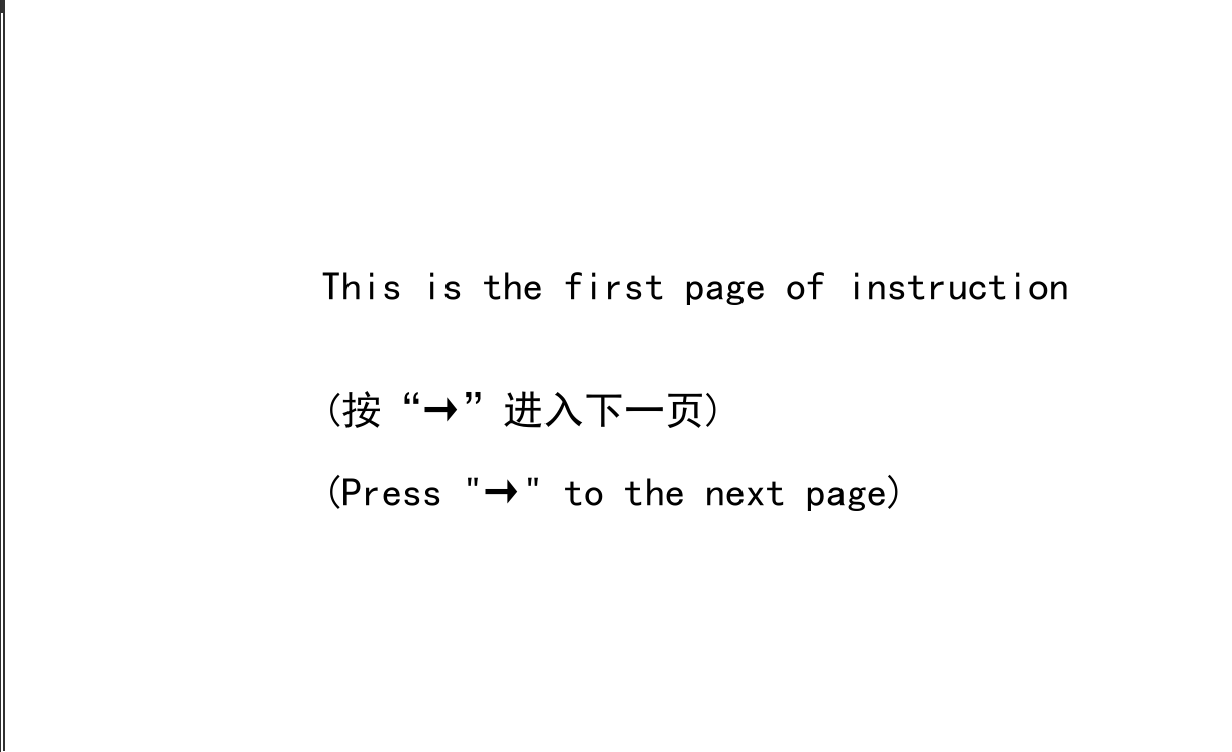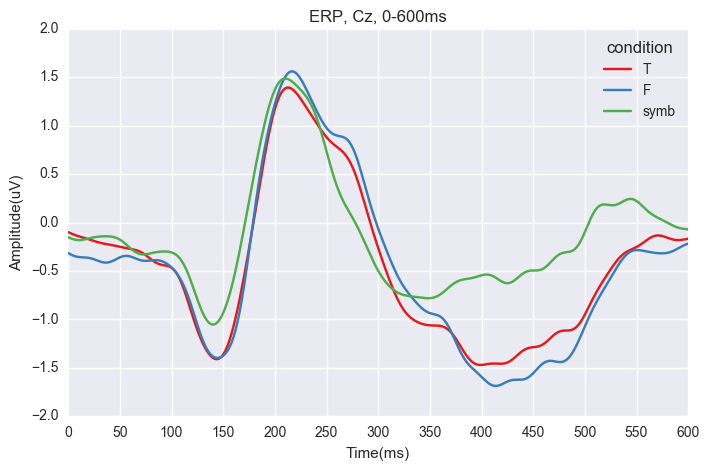Van der Haegen, L., Acke, F., Vingerhoets, G., Dhooge, I., De Leenheer, E., Cai, Q.*, Brysbaert, M. (in press) Laterality and unilateral deafness: Patients with congenital right ear deafness do not develop atypical language dominance. Neuropsychologia.
Teng, X., Tian, X., & Poeppel, D.(2016). Testing multi-scale processing in the auditory system. Scientific Reports, 6, 34390. doi:10.1038/srep34390
Ding, N., Melloni, L., Tian, X., &Poeppel, D. (2016). Rule-based and word-level statistics-based processing of language: insights from neuroscience. Language,Cognition and Neuroscience, 1-6. doi: 10.1080/23273798.2016.1215477
Tian, X., Zarate, J.M., Poeppel, D.(2016). Mental imagery of speech implicates two mechanisms of perceptual reactivation. Cortex. 77, 1-12. doi: 10.1016/j.cortex.2016.01.002
Ding, N., Melloni, L., Zhang, H., Tian,X., Poeppel, D. (2016). Cortical tracking of hierarchical linguistic structure in connected speech. Nature Neuroscience.19(1), 158-164.
Tian, X., & Poeppel, D. (2015). Dynamics of self-monitoring and error detection in speech production: evidence from mental imagery MEG. Journal of Cognitive Neuroscience. 27(2), 352-364.
Leroy, F., Cai, Q., Bogart, S., Dubois, J., Coulon, O., Monzalvo, K., Fischer, C., Glasel, H., Van der Haegen, L., Benezit, A., Lin, C.P., Kennedy, D., Ihara, A.S., Hertz-Pannier, L., Moutard, M.L., Poupon, C., Brysbaert, M., Roberts, N., Hopkins, W., Mangin, J.F., Dehaene-Lambertz, G. (2015) A new human-specific brain landmark: The depth asymmetry of superior temporal sulcus. Proc Natl Acad Sci 112(4): 1208-1213.
Cai, Q.*, and Van der Haegen, L. (2015). What can atypical language hemisphericspecialization tell us about cognitive functions? Neurosci Bull 31(2): 220-226.
Zarate, J.M., Tian, X., Woods, K.J.P.,& Poeppel, D. (2015). Multiple levels of linguistic and paralinguistic features contribute to voice recognition. Scientific Reports. 5: 11475. doi: 10.1038/srep11475 (*equal contribution)
Van der Haegen, L., Cai, Q., Stevens, M.A., and Brysbaert, M. (2013). Interhemispheric communication influences reading behavior. J Cogn Neurosci 25(9): 1442-1452.
Greve, D.N., Van der Haegen, L., Cai, Q., Stufflebeam, S., Sabuncu, M.R., Fischl, B., and Brysbaert, M. (2013) A surface-based analysis of language lateralization and cortical asymmetry. J Cogn Neurosci 25(9): 1477-1492.
Cai, Q.*, Van der Haegen , L., and Brysbaert, M. (2013). Complementary hemispheric specialization for language production and visuospatial attention. Proc Natl Acad Sci 110(4): E322-330.
Vingerhoets, G., Alderweireldt, A.S., Vandemaele, P., Cai, Q., Van der Haegen, L., Brysbaert, M., and Achten, E. (2013). Praxis and language are linked: Evidence from co-lateralization in individuals with atypical language dominance. Cortex 49(1): 172-183.
Tian, X., & Poeppel, D. (2013). The effect of imagination on stimulation: the functional specificity of efference copies in speech processing. Journal of Cognitive Neuroscience. 25(7), 1020-1036.
Luo, H., Tian, X., Song, K., Zhou, K., & Poeppel, D. (2013). Neural response phase tracks how listeners learn new acoustic representations. Current Biology. 23(11), 968–974.(*equal contribution)
Tian, X., & Huber, D.E. (2013). Playing ‘Duck Duck Goose’ with neurons: Change detection through connectivity reduction. Psychological Science.24(6), 819–827.
Brysbaert, M., Cai, Q., and Van der Haegen, L. (2012). Brain asymmetry and visual word recognition: Do we have a split fovea? In J. Adelman (Ed.): Visual Word Recognition, Volume 1: Models and Methods, Orthography and Phonology. Hove, UK: Psychology Press.
Tian, X., & Poeppel, D. (2012). Mental imagery of speech: linking motor and sensory systems through internals imulation. Front. Hum. Neurosci. 6:314. doi: 10.3389/fnhum.2012.00314
Van der Haegen , L., Cai, Q., and Brysbaert, M. (2012). Colateralization of Broca’s area and the visual word form area in left-handers: fMRI evidence. Brain Lang 122(3): 171-178.
Wu, J., Duan, H., Tian, X., Wang, P.,& Zhang, K. (2012). The effects of visual imagery on face identification: an ERP study. Front. Hum. Neurosci. 6:305. doi: 10.3389/fnhum.2012.00305
Van der Haegen, L., Cai, Q., Seurinck, R., and Brysbaert, M. (2011). Further fMRI validation of the visual half field technique as an indicator of language laterality: A large-group analysis. Neuropsychologia 49: 2879-2888.
Davelaar, E.J., Tian, X., Weidemann, C.T., & Huber, D.E. (2011). A habituation account of change detection insame/different judgments. Cognitive,Affective and Behavioral Neuroscience, 11,608-626.
Tian, X., Poeppel, D., & Huber, D.E. (2011). TopoToolbox: Using sensor topography to calculate psychologically meaningful measures from event-related EEG/MEG. Computational Intelligence and Neuroscience. 2011,doi:10.1155/2011/674605
Cai, Q.*, and Brysbaert, M. *(2010). *SUBTLEX-CH: Chinese word and character frequencies based on film subtitles. PLoS One 5(6): e10729. (Chinese word frequencies. Online search: http://crr.ugent.be/isubtlex_ch/)
Cai, Q.*, Paulignan, Y., Brysbaert, M., Ibarrola, D., & Nazir, T.A. (2010). The left ventral occipito-temporal response to words depends on language lateralization but not on visual familiarity. Cereb Cortex 20: 1153–1163.
Tian, X., & Poeppel, D. (2010). Mental imagery of speech andmovement implicates the dynamics of internal forward models. Front. Psychology, 1:166. doi: 10.3389/fpsyg.2010.00166
Tian, X., & Huber, D.E. (2010). Testing an associative account of semantic satiation. Cognitive Psychology,60, 267-290.
Rosazza, C., Cai, Q., Minati, L., Paulignan, Y., and Nazir, T.A. (2009). Early involvement of dorsal and ventral pathways in visual word recognition: An ERP study. Brain Res 1272: 32-44.
Cai, Q.*, Lavidor, M., Brysbaert, M., Paulignan, Y., and Nazir, T. A. (2008). Cerebral lateralization of frontal lobe language processes and lateralization of the posterior visual word processing system. J Cogn Neurosci 20: 672-681.
Tian, X., & Huber,D.E. (2008). Measures of spatial similarity and response magnitude in MEG andscalp EEG. Brain Topography, 20,131-141.
Huber, D. E., Tian, X., Curran, T., O’Reilly, C, & Woroch, B. (2008). The dynamics of integration and separation: ERP, MEG, and neural network studies of immediate repetition effects. Journal of Experimental Psychology: Human Perception and Performance, 34,1389-1416.
TopoToolbox is an open-source software for topographic analysis on the event-related electrophysiological (EEG/MEG) data based on the method proposed by Tian and Huber (2008; 2011). TopoToolbox provides a tool for researchers to directly derive robust measures of response pattern (topographic) similarity and psychological meaningful response magnitude using electromagnetic signals in sensor space. These measures are useful for testing psychological theories without anatomical descriptions.
These are the Chinese word frequencies discussed in the Plos ONE article of Cai & Brysbaert, which you find here. The article explains what is in the files. So, this will not be repeated here.
The database contains various information of more than 20,000 Chinese characters. You can filter, extract the characters on any rule as your need, and then download them.
Expy is an easy-yet-powerful experiment framework builder for psychology. It's aimed at setting up an experiment without struggling with the manual production of stimuli, data loading and storing, or the other time-consuming works, by using various module functions. Expy is designed for psycholinguistic experiments, but it's also suitable for any other experiments.
You can use a concise string to describe the timepoint(s), condition(s), channel(s) you want to analyse. Calling only one function is enough to produce results and figures. It supports ERP, GFP, Topography plot, TANOVA, MVPA, Clustering, and other channel-based or global-field-based analysis methods. Also, it enables you to try out your own method with little effort, since MEEG is designed as an open-source platform.
Multiple positions are available. Information on applying (http://shanghai.nyu.edu/about/work/fellowships). Job inquires can be sent to the PIs
Two ways to join our lab, either via NYU Neuroscience Doctoral Program Shanghai Track or ECNU Brain and Cognitive Science Graduate Program Track. Detailed information can be found at (http://neuro.shanghai.nyu.edu/graduate). Prospective students are encouraged to contact the PIs.
Positions are available for post-graduate students who hold Bachlor's or Master’s degrees and are looking for more research experience. Candidates are encouraged to contact the PIs.
Our group is open to motivated undergraduates who interested in conducting independent research on human cognitive functions, including speech, language, learning, memory and other higher order cognitive functions. Such research opportunitiescan be taken during semesters or breaks. Please send your CV, description of your research interests, and a copy of unofficial transcripts to the PIs.
